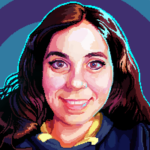With technology evolving at high speed, more companies are embracing the Agile Product Development roles to organize and successfully launch new products. These roles often consist of product managers, scrum masters, and product owners. And while they all have similarities, their core function is quite different. Read through this product manager vs. scrum master vs. product guide, and learn the differences.
What is Product Management?
Product management is the strategic planning within an organization that oversees products’ overall success. The process drives development, continual support, and improvement of products right starting from development, planning, verification, business, etc.
Product management involves keeping up-to-date with product features, channels, sales, support, warranty, etc.
What is Agile, and How is it Relevant for Product Management?
Product management oversees a product through numerous stages. On the other hand, Agile has more flexibility than decadent linear and waterfall development.
An Agile environment is preferable for setting product strategies and creating product roadmaps. The atmosphere is receptive to product planning and implementation, thus quickly responding to building products and getting customer feedback.
Agile is a great asset since it delivers value faster and higher quality, predictability, and adapts to change. Scrum is a popular methodology that functions as an Agile subset. It’s mainly used as a lightweight, agile development framework process.
What is Scrum?
Scrum is a framework that makes it possible for team members to self-organize, work in alignment and quickly make changes. The platform encourages members to work together, learn through experience, and keep tabs on progress and keep improving.
Teams handle complex projects effectively and deliver high-quality products. Scrum’s principles are simple, straightforward, and offer easy ways to manage projects.
Scrum-Agile, a development management framework, comprises tools used in meetings, task allocation, and discussions. The framework progress trackers assist teams in structuring and work management.
Product Owner vs. Product Manager vs. Scrum Master: Definitions
A product owner and a product manager work towards the same goal: building and improving products that add value to customers and company stakeholders.
The product owner’s role is evolving thanks to Agile software development. The owner maximizes the product’s value by developing and managing the product’s Backlog.
The product owner creates user stories for the development team and communicates customers’ voices within the Scrum process. The product owner maintains a closer relationship with the development team and the product.
A product manager handles users’ needs, prioritizes the next build, and aligns a team around the product’s roadmap. The product manager role has morphed to become multi-functional.
It now covers organizational product development to a more dynamic cross-functional role with overall accountability. The product manager oversees the smooth and productive functioning of all products within the organization.
A scrum master sees to it that the scrum framework is followed. The scrum masterworks with every team member guiding, defining, and setting their roles.
Product Owner vs. Product Manager vs. Scrum Master: Responsibilities and Roles
The product owner supervises the development team, manages product backlog, writes user stories and requirements.
The product owner presents the development team with the customer’s needs. Product owners are tactical in practice and work diligently with delivery teams to build proper functionality within the given timeframe.
Product owners maintain customer needs on every Sprint and supervise design teams and engineers on every task they handle. They pay attention to the product structure and regularly speak with the UX designers and developers to ensure the final product is perfect.
Product owners attend Scrum Meetings to keep working on the track, organize work in the Backlog, manage Sprints and attend Agile team meetings. They also conduct sufficient analysis, ensuring that the requirements are ready to be handled.
Product Owner Responsibilities and Roles
- Defining the vision
- Handling product backlog
- Prioritizing needs
- Supervising development stages
- Foreseeing client requirements
Scrum Master Responsibilities and Roles
Although Scrum masters and Project Managers have similar roles, their functions are mainly different. Some of the responsibilities of Scrum Masters include:
- They protect teams from inward and outside distractions and disruptions
- They oversee successful team interaction and operation
- They tend smaller scrum teams and are in charge of small groups performances
- They assist Product Owners by effectively managing Backlog
- They contribute heavily towards quality management, resource management, and scope management
Product Management Responsibilities and Roles
In large organizations, product managers handle several specialist teams.
Marketers, researchers, and analysts work on the input while designers and managers handle everyday executions, test prototypes, draw up designs and search for bugs.
The product managers get additional help, and they concentrate on streamlining stakeholders to follow the drawn-up vision.
In smaller organizations, product managers spend more time working on defining and seeing through the laid vision. Some of the roles of a product manager include:
- Keeping tabs on market dynamics to come up with competitive analyses
- Concentrates on product features and capabilities
- Rallying stakeholders around the product vision
- Learning and catering to user needs
- Creating an atmosphere for teams to embrace independent decision-making
- Defining the vision the product should be moulded after
Product Owner, Product Manager & Scrum Master Skills
Analytical Skills; critical skills product owners need. They use this skill set to gather and analyze info, make timely decisions, and solve complex problems, thus enhancing productivity.
Communication skills: product owners are charged with creating and communicating product backlog and goals.
Technical Skills: product owners should know everything about development, agile framework, scrum approach, design, IT infrastructure, and software development.
Decision-Making: the product owner is the decision-maker, handling product backlog, prioritizing the products, and communicating information with the scrum team.
Scrum Masters Skills: Keeping the Team in check; Scrum masters keep tabs on team members to ensure they achieve their goals. They handle distractions that make it difficult to perform quality work.
Share Experiences and Encouraging Collaborations: Scrum Masters monitor and share experiences with team members. They encourage collaboration, attend stand-up meetings, release planning sessions, iteration planning, and demo sessions.
Product Management Skills: Storytelling; a product owner chops up user stories into the product backlog and sends it to developers. The product manager transforms the story into a product feature that excites users.
Problem Solving: the product manager handles issues ranging from action to delivery. They take conflicts that occur within the development team.
Good Communication Skills: The product manager should understand and speak the customers’ and developers’ languages.
Liaison: The product manager handles product backlog, acts as the go-between the customers, developer team, and stakeholders. The product owner oversees a smooth information flow between developers, stakeholders, and other relevant parties.
Conclusion
The responsibilities of the product owner, scrum master, and project manager, although similar, have many differences. Product Owners are charged with planning and prioritizing tasks for Scrum Teams. Scrum masters oversee every Scrum Project and ensure that the Scrum approach adheres to the Scrum Guide. Product Managers oversee the proper implementation and timely project delivery.
Are you looking for someone to manage your digital projects? We can tap into a network of Product Managers, Product Owners, and Scrum Masters who will be ready to support you, fit for your industry, technology, company culture, and business needs. Moreover, we also are experts in finding fully remote operational software developers and engineers perfectly fitted for your project.





